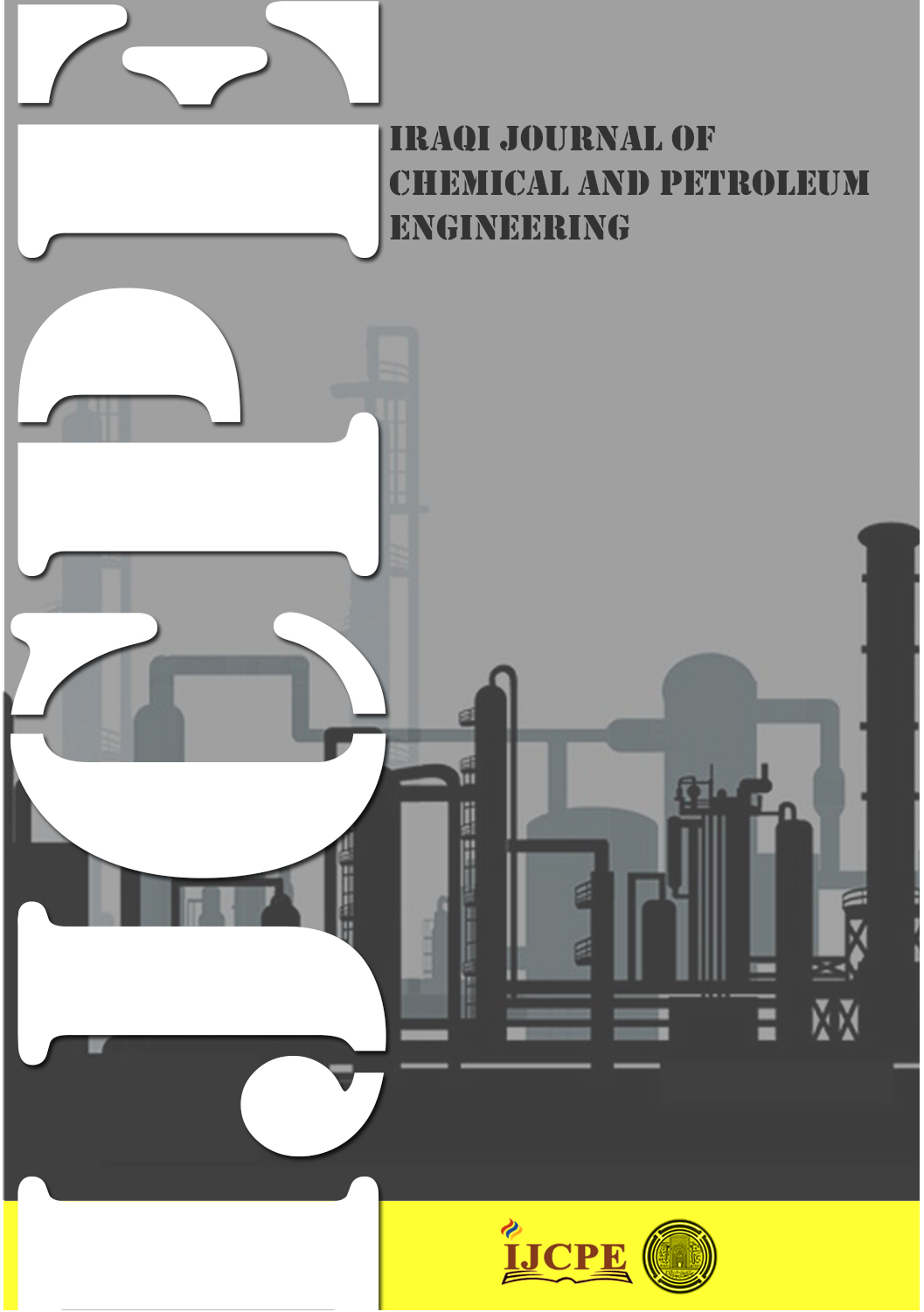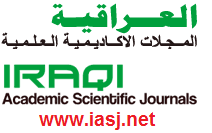Development of a dynamic compositional reservoir model for enhanced oil recovery in Nahr Umr formation of Abu-Amood oil field
DOI:
https://doi.org/10.31699/IJCPE.2025.1.6Keywords:
Original oil in place; Abu-Amood; Nahr Umr Formation; Compositional modelAbstract
Due to the research gap in the literature regarding the Nahr Umr formation within the Abu-Amood oil field, this study aims to develop a dynamic compositional reservoir model for this formation. Located in the Dhi Qar province of Iraq, the Nahr Umr Formation, primarily composed of sandstone, lies 3025 meters below sea level and holds significant hydrocarbon potential. This research focuses on building a compositional model to predict reservoir behavior under various production strategies, ultimately maximizing oil recovery. The model was constructed using geological report data and implemented with Petrel and CMG software. Utilizing pressure-volume-temperature (PVT) data and the Peng-Robinson equation of state (EOS), an accurate fluid properties model was developed. Through reservoir and well area calculations, this study demonstrates that the Nahr Umr reservoir can be effectively drained using only six producers. This comprehensive model is crucial for designing efficient production strategies and enhancing oil recovery in the Nahr Umr Formation.
Received on 02/07/2024
Received in Revised Form on 04/08/2024
Accepted on 04/08/2024
Published on 30/03/2025
References
[1] R. Abd Razak, A. Chan, C. M. Pang, J. Lew, and S. H. Zamridin, “Integration of Dynamic, Static and Seismic Models: Developing High Precision Target Drilling for Matured Fields,” in Day 3 Fri, March 03, 2023, IPTC, Feb. 2023. https://doi.org/10.2523/IPTC-22943-EA
[2] A. J. Ilozobhie and D. I. Egu, “Dynamic reservoir sand characterization of an oil field in the Niger Delta from seismic and well log data,” Arabian Journal of Geosciences, vol. 14, no. 10, p. 853, May 2021, https://doi.org/10.1007/s12517-021-06542-4
[3] H. S. O. Odeh, “Yamama platform and the effect on the configuration of reservoir units in the Abu Amood field,” Journal of Petroleum Research and Studies, vol. 8, no. 2, pp. 1–12, May 2021, https://doi.org/10.52716/jprs.v8i2.248
[4] S. Z. Khorshid and A. I. Khaleel, “Desinging of 3D Seismic Survey And Data Processing of Abu Amood Oil Field Southern of Iraq,” International Journal of Advanced Engineering Research and Science, vol. 4, no. 10, pp. 115–124, 2017, https://doi.org/10.22161/ijaers.4.10.20
[5] S. Z. Khorshid and A. I. Khaleel, “Structural and Stratigraphic Study of the Nahr Umr Formation (Lower Cretaceous) Using 3D seismic Survey in Abu Amood Oil Filed, Southern Iraq,” IRAQI JOURNAL OF SCIENCE, vol. 58, no. 4A, Oct. 2017, https://doi.org/10.24996/ijs.2017.58.4A.15
[6] M. Nasser, S. Al-Jawed, and M. Hassan, “Geological Modeling for Yamama Formation in Abu Amood Oil Field,” Iraqi Journal of Science, vol. 58, no. 2C, pp. 1051–1068, Dec. 2017.
[7] Z. Mahdi and G. Farman, “3D Geological Model for Zubair Reservoir in Abu-Amood Oil Field,” Iraqi Geological Journal, vol. 56, no. 1B, pp. 40–50, Feb. 2023, https://doi.org/10.46717/igj.56.1B.4ms-2023-2-12
[8] M. Abed Talib and M. Al-Jawad, “Unveiling the Potential: A Pioneering Investigation into Nahr Umr Formation in Abu Amood Field,” Iraqi Geological Journal, vol. 57, no. 1F, pp. 272–285, Jun. 2024, https://doi.org/10.46717/igj.57.1F.20ms-2024-6-29
[9] Nada. S. Ahmedzeki, I. M. Ridha, Y. M. Ali, and Z. T. AbidAlwahab, “Development of PVT Correlation for Iraqi Crude Oils Using Artificial Neural Network,” Iraqi Journal of Chemical and Petroleum Engineering, vol. 13, no. 3, pp. 9–16, Sep. 2012, https://doi.org/10.31699/IJCPE.2012.3.2
[10] A. F. Hasan and G. M. Farman, “Optimization of Separator Size and Operating Pressure for Three-phase Separators in the West Qurna1 Oil Field,” Iraqi Journal of Chemical and Petroleum Engineering, vol. 25, no. 1, pp. 103–110, Mar. 2024, https://doi.org/10.31699/IJCPE.2024.1.10
[11] M. A. Ahmed, G. H. Abdul-Majeed, and A. K. Alhuraishawy, “Asphaltene Precipitation Investigation Using a Screening Techniques for Crude Oil Sample from the Nahr-Umr Formation/Halfaya Oil Field,” Iraqi Journal of Chemical and Petroleum Engineering, vol. 24, no. 1, pp. 41–50, Mar. 2023, https://doi.org/10.31699/IJCPE.2023.1.6
[12] S. K. Abdulredha and M. S. Al-jwad, “Calibrating the Reservoir Model of the Garraf Oil Field,” Iraqi Journal of Chemical and Petroleum Engineering, vol. 24, no. 4, pp. 141–150, Dec. 2023, https://doi.org/10.31699/IJCPE.2023.4.14
[13] J. I. Siddique, D. M. Anderson, and A. Bondarev, “Capillary rise of a liquid into a deformable porous material,” Physics of Fluids, vol. 21, no. 1, Jan. 2009, https://doi.org/10.1063/1.3068194
[14] A. J. Desbarats, “Geostatistical Analysis of Water Saturation in Heterogeneous Unsaturated Media under Capillary-Gravity Equilibrium,” vol. 6, Springer, 1994, pp. 359–370. https://doi.org/10.1007/978-94-011-0824-9_40
[15] A. Rabinovich and K. B. Cheng, “Equilibrium gravity segregation in porous media with capillary heterogeneity,” Journal of Fluid Mechanics, vol. 890, p. A3, May 2020, https://doi.org/10.1017/jfm.2020.133
[16] D. Guérillot and J. Bruyelle, “Uncertainty Assessment of Hydrocarbon in Place With Geological Models Satisfying Gravity-Capillary Equilibrium,” in Day 4 Wed, October 16, 2019, SPE, Oct. 2019. https://doi.org/10.2118/198099-MS
[17] A. Mazzacca, C. Musca, G. Picone, and C. Tarchiani, “A Novel Approach to Initialize a 3D Dynamic Model Using Saturation Height Modelling,” in Day 3 Thu, December 03, 2020, SPE, Dec. 2020. https://doi.org/10.2118/200648-MS
[18] S. Ghosh et al., “A review of reservoir oil-water transition zone characterization and potential recovery methods,” Geopersia, vol. 13, no. 2, pp. 323–336, 2023, https://doi.org/10.22059/geope.2023.350783.648689
Downloads
Published
Issue
Section
License
Copyright (c) 2025 The Author(s). Published by College of Engineering, University of Baghdad.

This work is licensed under a Creative Commons Attribution 4.0 International License.













